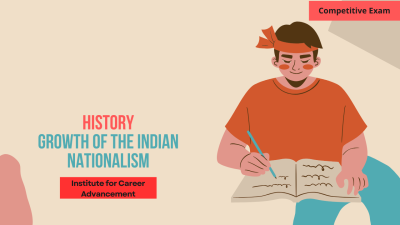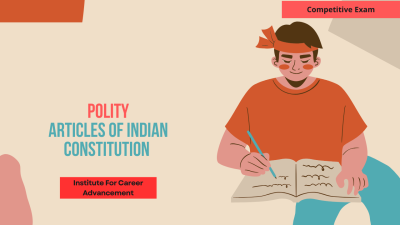Growth of the Indian Nationalism
The growth of Indian nationalism was a gradual process that took place over the 19th and early 20th centuries as a response to British colonial rule. Several factors contributed to its development: Economic Exploitation: British policies led to economic hardship, deindustrialization, and widespread poverty in India, which fueled resentment and a desire for change. Social and Cultural Reforms: Reform movements, such as the Brahmo Samaj and Arya Samaj, promoted social justice and cultural revival, which helped foster a sense of national pride and unity. Western Education: The introduction of Western-style education exposed Indians to liberal ideas like democracy and equality, inspiring them to challenge British rule. Political Organizations: The formation of the Indian National Congress (INC) in 1885 gave Indians a platform to voice their political demands, initially seeking reforms within the colonial system. Nationalist Movements: The increasing economic and political awareness led to organized protests and movements, such as the Non-Cooperation Movement and the Civil Disobedience Movement, which eventually contributed to India's independence in 1947. Overall, Indian nationalism grew out of a collective resistance to British colonial policies and the desire for self-rule, with the efforts of leaders like Mahatma Gandhi and Jawaharlal Nehru playing a crucial role. ভারতীয় জাতীয়তাবাদের বিকাশ একটি ক্রমান্বয়ে প্রক্রিয়া ছিল যা 19শ এবং 20শ শতাব্দীর গোড়ার দিকে ব্রিটিশ ঔপনিবেশিক শাসনের প্রতিক্রিয়া হিসাবে সংঘটিত হয়েছিল। বেশ কয়েকটি কারণ এর বিকাশে অবদান রেখেছেঃ অর্থনৈতিক শোষণঃ ব্রিটিশ নীতিগুলি ভারতে অর্থনৈতিক দুর্দশা, শিল্পায়ন ও ব্যাপক দারিদ্র্যের দিকে পরিচালিত করেছিল, যা অসন্তোষ এবং পরিবর্তনের আকাঙ্ক্ষাকে উস্কে দিয়েছিল। সামাজিক ও সাংস্কৃতিক সংস্কারঃ ব্রাহ্ম সমাজ ও আর্য সমাজের মতো সংস্কার আন্দোলনগুলি সামাজিক ন্যায়বিচার ও সাংস্কৃতিক পুনরুজ্জীবনের প্রচার করেছিল, যা জাতীয় গর্ব ও ঐক্যের অনুভূতি গড়ে তুলতে সহায়তা করেছিল। পাশ্চাত্য শিক্ষাঃ পাশ্চাত্য ধাঁচের শিক্ষার প্রবর্তন ভারতীয়দের গণতন্ত্র ও সমতার মতো উদার ধারণার প্রতি উন্মুক্ত করে দেয়, যা তাদের ব্রিটিশ শাসনকে চ্যালেঞ্জ জানাতে অনুপ্রাণিত করে। রাজনৈতিক সংগঠনঃ 1885 সালে ভারতীয় জাতীয় কংগ্রেস (আইএনসি) গঠন ভারতীয়দের তাদের রাজনৈতিক দাবিগুলি তুলে ধরার জন্য একটি মঞ্চ প্রদান করে, প্রাথমিকভাবে ঔপনিবেশিক ব্যবস্থার মধ্যে সংস্কারের চেষ্টা করে। জাতীয়তাবাদী আন্দোলনঃ ক্রমবর্ধমান অর্থনৈতিক ও রাজনৈতিক সচেতনতা অসহযোগ আন্দোলন এবং আইন অমান্য আন্দোলনের মতো সংগঠিত প্রতিবাদ ও আন্দোলনের দিকে পরিচালিত করে, যা শেষ পর্যন্ত 1947 সালে ভারতের স্বাধীনতায় অবদান রাখে। সামগ্রিকভাবে, মহাত্মা গান্ধী এবং জওহরলাল নেহরুর মতো নেতাদের প্রচেষ্টায় গুরুত্বপূর্ণ ভূমিকা পালন করে ব্রিটিশ ঔপনিবেশিক নীতির বিরুদ্ধে সম্মিলিত প্রতিরোধ এবং স্বায়ত্তশাসনের আকাঙ্ক্ষা থেকে ভারতীয় জাতীয়তাবাদের বিকাশ ঘটে।
English
Last updated
Thu, 20-Feb-2025



















